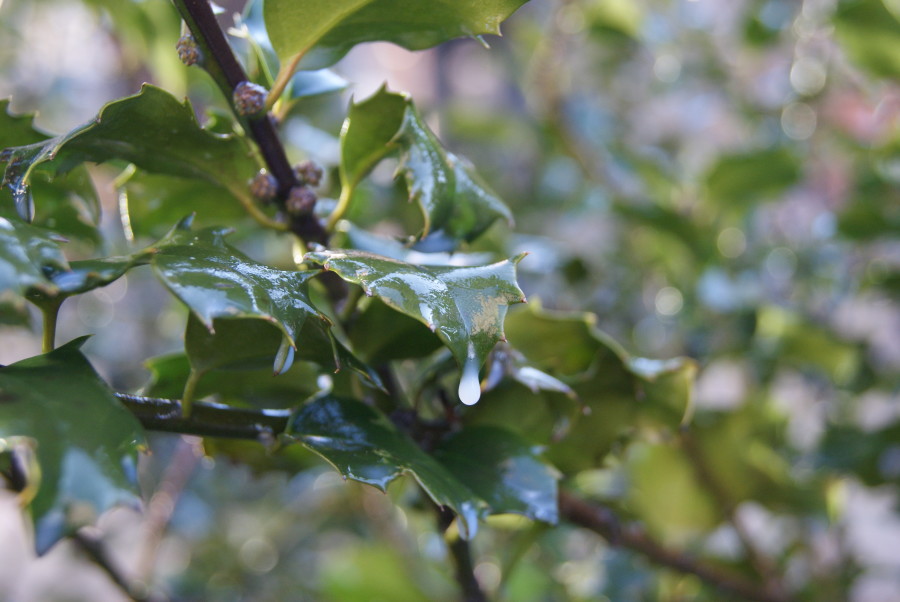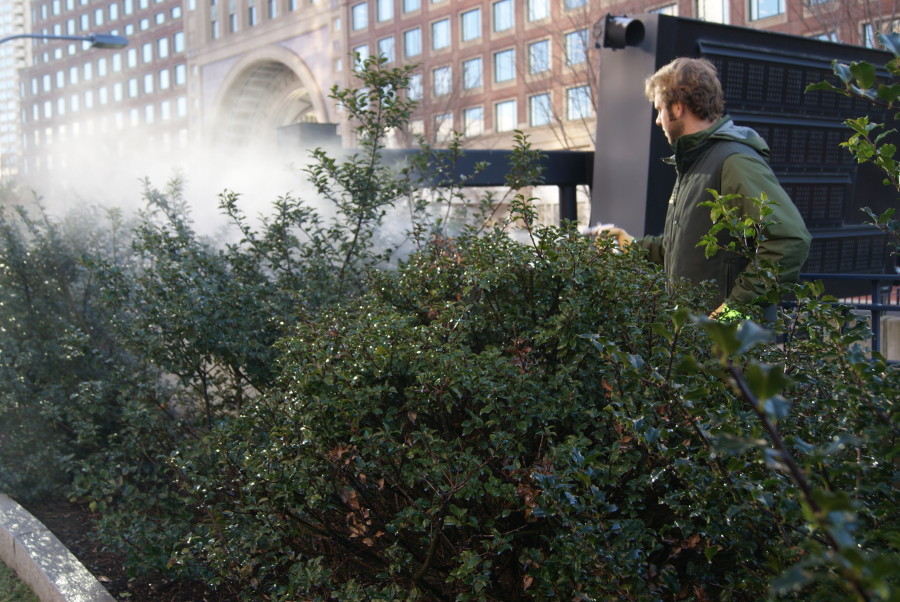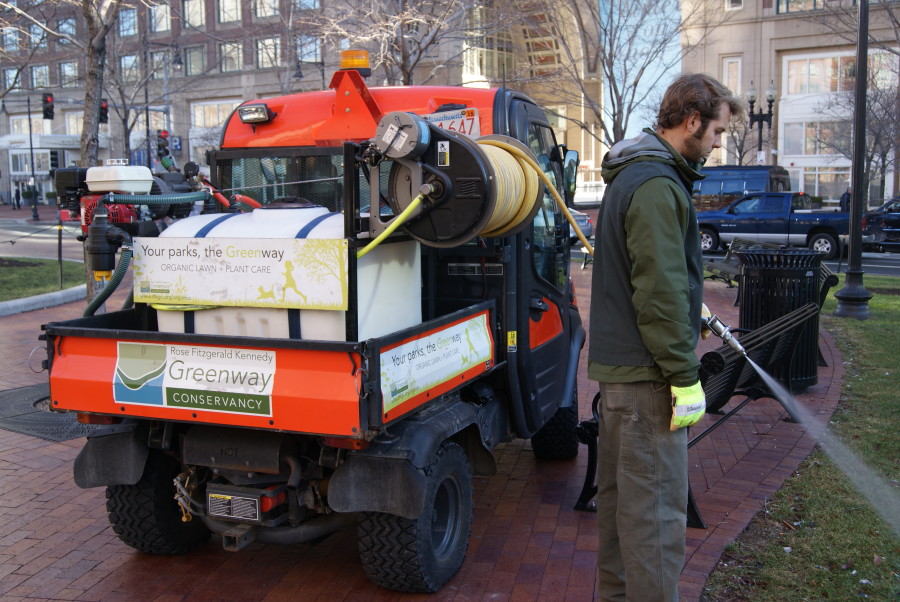Gardens in Winter; Protecting our Plants
We have a number of broadleaf evergreen shrubs that provide texture and color to the Greenway all winter including Ilex, Buxus, and Rhododendron. While we select plants because they are well suited to our climate and conditions, these leafy plants, the hollys, the boxwoods and shrubs in the rhododendron family, benefit from added protection and help. Built for the tough winter weather with shiny, thick leaves that don’t lose water easily and stand up to harsh winds and cold temperatures, these shrubs mostly fend for themselves. In the worst weather, however, the leaves ‘burn’ from dehydration, leaving them looking brown and damaged by spring. To help prevent this we spray them with an oil and wax mixture called an anti-dessicant, adding a layer that helps retain moisture in their leaves and stems.

Holly leaf (Ilex x meserveae ‘Blue Princess) with anti-dessicant.

Eric saturates the Ilex with anti-dessicant spray.
The warm spell we are having now is perfectly timed for our regular, mid winter, maintenance task – the second application of anti-dessicant spray. By spraying three times a year, about Thanksgiving, mid January and again in mid February, we minimize the winter burn, that burnt, black look to the leaves, keeping them green and wonderful right into the warm spring weather. This is only one part of the organic maintenance program we use throughout the Greenway parks to keep the plants and land healthy, vibrant and sustainably managed.
Photographs and text by Darrah Cole

The Kubota and sprayer assembly. Eric is clearing the line.
